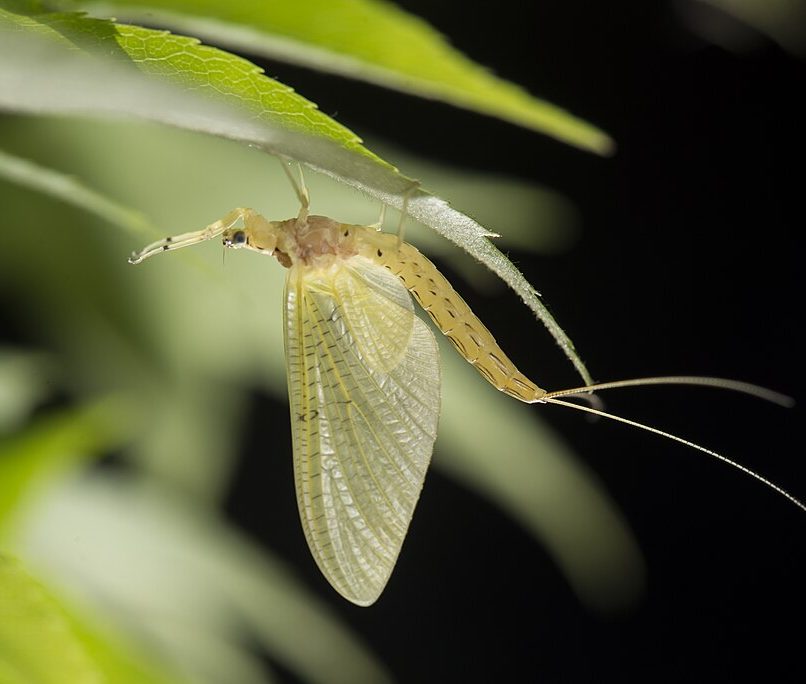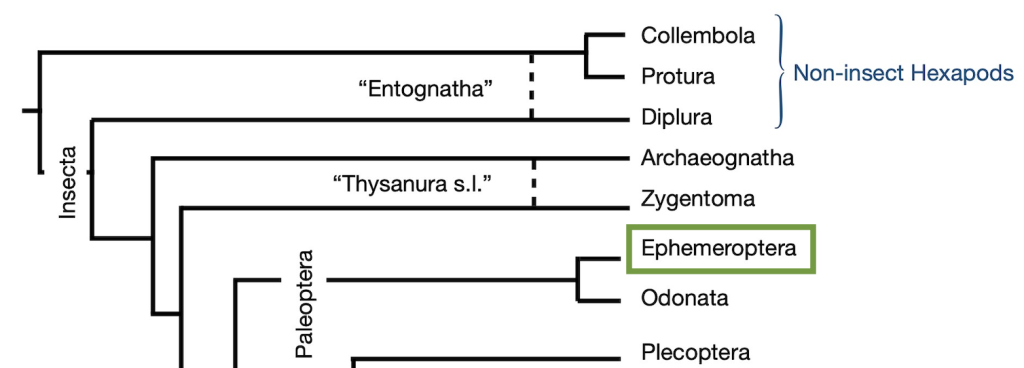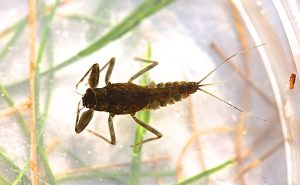15 The Orders of Insects: Ephemeroptera


Order Ephemeroptera
Order Ephemeroptera
- common name: mayflies
- Greek, ephemeros = lasting a day; pteron = wing
- derived from a basal node of the phylogeny of extant winged insects
- approximately 3000 modern species, cosmopolitan, 84 Australian species
- adults very short-lived, from a few hours to a day or two; do not feed
- can show synchronised emergence in huge numbers; swarming behaviour sometimes astounding; occasionally attracted in large numbers to lights
- adults usually seen near water on vegetation or other objects
- mating occurs during flight
- all nymphs aquatic, found in fast-flowing streams or still waters of ponds; found clinging to rocks or some species burrow into bottom muck
- most nymphs feed on algae, detritus, aquatic plants; some species are predatory
- often used as valuable ecological indicators

Characteristics of Ephemeroptera
Adult
- elongate insects, soft-bodied, small to medium sizes
- mouthparts reduced; compound eyes large; short filiform antennae
- wings membranous and fluted with large triangular fore wings and smaller hind wings, held above thorax at repose; (average wingspan ~15mm)
- abdomen slender compared to stout thorax, with three “tails”: paired cerci often as long as a median caudal appendage
Immatures
- Immature stages (nymphs) aquatic, with three “tails” and plate-like abdominal gills
- penuItimate instar is a winged subimago (subadult)
The Subimago: A Unique Feature of Ephemeroptera
The subimago is an immature (non-sexual) stage with wings. Its body surface is covered in small hairs (microtrichia) or spines (microspines) which adults lack almost entirely. Microtrichia are thought to provide hydrofuge function for subimago emerging on water surface. Generally slower flyers than adults, weight loss of 25% (mostly water) to adult.
Watch the video: Mayfly – a life story (YouTube, 4m 19s).
Topic Review
Do you know…?
- anatomy of immature and adult mayflies
- the characteristics of the subimago?

